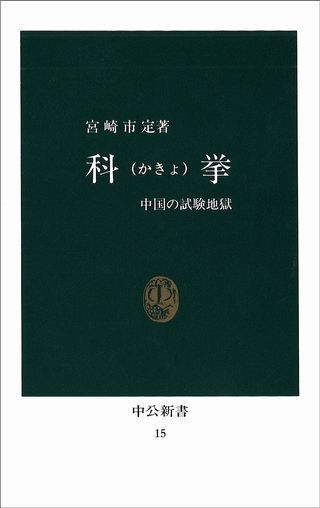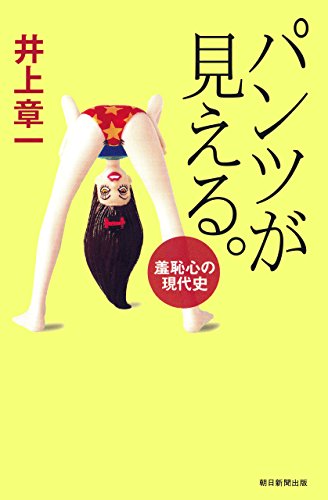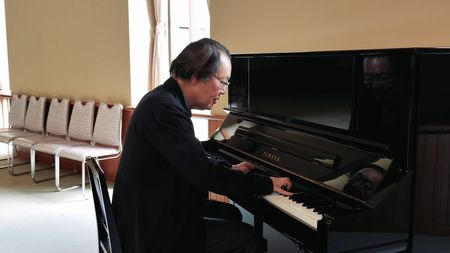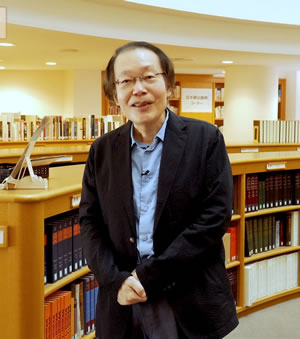Interview with Shōichi Inoue, new director-general of the International Research Center for Japanese Studies

In April 2020, the International Research Center for Japanese Studies welcomed Shōichi Inoue as its seventh director-general. As a child, Inoue says, he loved reading and drawing and still admires the performing arts and is fascinated by buskers on the street. We asked Professor Inoue why he changed course from architecture, a discipline in the science and engineering to the humanities, and about the wonders of history and the history of manners and customs, as well as about his hobby, playing the piano.
You enrolled in Kyoto University’s School of Architecture, Faculty of Engineering as an undergraduate, but later you chose to pursue the humanities. What inspired that switch?
I think my interest in the humanities started when I did some reading in the humanities after entering university. Particularly memorable was Ichisada Miyazaki’s (1901–1995) Kakyo (see photo caption), which chronicles the history of China’s entrance examinations back to the Song period (960–1279). It left quite an impression on me, perhaps because I had just experienced the university entrance exams myself. The book will resonate one way or other with people who have experienced exam competition, but it turned me into a fan of Miyazaki. As I read through his works, I became aware of the kind of writing about history that adult readers appreciate. I think that’s when I started to read widely among the classics in the humanities, and what I found there drew me toward this realm of academia.
One wonders, come to think of it, whether humanities scholars today have managed to write works that can inspire and entice someone like me—a former engineering student—into the world of the humanities.

Kakyo: Chūgoku no shiken jigoku [The Civil Service Examinations: Imperial China’s Exam Hell], Tokyo: Chūō Kōron Sha, 1946. Professor Inoue read this book by Ichisada Miyazaki after experiencing university entrance exams. This book prompted Professor Inoue’s subsequent reading of classical works in the humanities. Available in English as China’s Examination Hell: The Civil Service Examinations of Imperial China, trans. Conrad Schirokauer, (New York: Weatherhill, 1976).
Of the humanities, you found history particularly interesting. Why do you find history attractive?
Yes, among the classes in the School of Architecture I was drawn to those on the history of architecture and art. When an anthropologist introduces us to tribes and settlements whose cultures and values differ from those of modern Japan, we become aware of the major differences in institutions between our society and theirs. Similarly, if we go back 50 or 100 years back in Japanese society, we find that the values and mindsets then are far from those of today. These interesting facts help us see our present day without preconceptions.
In particular, focusing on the popular manners and customs (fūzoku) of society, can vividly illustrate how values and ways of thinking have changed. For instance, today when people attend funerals, they wear black clothes, but photos from funerals around the second and third decades of twentieth-century Japan (Taishō period) reveal the presence of young women dressed in bright long-sleeved furisode kimono. Funerals are occasions that attract large numbers of people, and it seems that in those days they functioned as opportunities for introducing young female family members available for marriage. It might seem unimaginable today, but up to a certain point this was normal practice in Japanese society.
How would you define fūzoku?
I define fūzoku as lifestyles that last for several decades. Minzoku (folk customs or traditions) probably better describe the longer-lasting practices and conventions of a society, and ryūkō (trends) are things that come and go in four to five years, or perhaps less than that. Fūzoku are somewhere between these two. To give you another example: photos of Japanese Diet members from the Meiji period (1868–1912) show that all men, both members of the ruling party and of the opposition parties, had beards or mustaches. But today, Diet members seldom sport facial hair, be they members of the Communist Party or the ruling Liberal Democratic Party. This stylistic difference between then and now indicates strong, folkways-imposed constraints that transcend political stance.
Usually, when discussing modernization in the context of humanities, people tend to belittle such seemingly trivial issues as why facial hair is rare for politicians. But I think ordinary manners and customs, which bind people regardless of ideologies, tell more about a given era than anything else.

Pantsu ga mieru: Shūchishin no gendaishi [Your Underwear Is Showing: The Modern History of Shame] (Tokyo: Asahi Shinbunsha, 2002). Professor Inoue says for this book, he collected and read related documents the most among all of his previous research projects.
The history of manners and customs is not a mainstream theme in the humanities and is thus often exposed to criticism. What is the driving force that keeps you going in your research and prevents you from being discouraged by such critiques?
It comes down to how I decided my stance at the age of 25, after having transferred from the Faculty of Engineering to Kyoto University’s Institute for Research in Humanities as a research associate, and coming face to face with research styles that drastically differed from what I was familiar with. For instance, I was in a seminar focusing on the year 1862 and engaged in examining all the diary entries made by members of the court nobility (kuge) that year, from New Year’s Day to the end of the twelfth month. Members of the seminar discussed why one diary described Emperor Kōmei (1831–1866) attending shihōhai—a New Year’s Day ceremony in which the emperor prays in the four cardinal directions—whereas another diary stated he was absent. As a former engineering student, I could not fathom why we should obsess over such details. But I decided not to push myself to adapt to that kind of approach, concluding that if did, what value I might bring to the field as a former engineering student would be nil. I decided I should let my interests dictate my research activities instead—like why Diet members no longer wear beards. I have always had a kind of baseless confidence that if a certain phenomenon fascinates me, surely there are others who would similarly be intrigued.
It may be presumptuous of me to say so, but Miyazaki’s Kakyo was an arresting read for a student who had just finished taking the entrance exams. And in the same token, I am certain that somebody will find me—a scholar driven by sheer personal curiosity—equally amusing.
We heard that you started to take piano lessons in your forties. What prompted you to learn the piano?
I thought if I could play the piano, that would prevent me from becoming unpopular when I grow old. One time I gave a presentation for a welfare-related gathering for elderly persons. As I chatted with the staff member in charge of the program, he told me something interesting: elderly men who brag about how important they used to be tend to be unpopular, while those who can play the piano get the attention of women of similar age. After guest speakers give their presentations, older men who used to be professors often criticize the lecturer. “He/she hasn’t read this particular source,” they would say, or they point out inconsistencies in the lecture, all to imply that they are smarter than the lecturer. No wonder these men have few friends. But I must say that listening to young people’s research presentations and calling attention to the gaps in their scholarship and logic is part of our job—our kind is destined to be unpopular; it’s an occupational affliction! So, to change that impending scenario, I started to take piano lessons.
Beginning as a middle-aged man, my progress is slow, which thankfully means it will be quite a while before I plateau like those who have been playing since childhood. I’m still getting better. When I’m practicing, I can forget about my research: playing the piano becomes a nice diversion whenever I hit a wall, and in the end it helps me be more productive.

After reaching his forties, Professor Inoue started to play the piano as a hobby. Now he is better at it than his daughter who started from a young age, and continues to improve by the day.
(Interview: Ayumi Koso)

Shōichi Inoue, Director-General of the International Research Center for Japanese Studies
Inoue specializes in the history of architecture and the history of manners and customs. He graduated from the School of Architecture, Faculty of Engineering, Kyoto University, and completed the master’s course at Kyoto University Graduate School of Engineering. He was a research associate at the Institute for Research in Humanities, Kyoto University from 1980. He joined the faculty of the International Research Center for Japanese Studies (Nichibunken) as assistant professor in 1987 and became professor in 2002. He assumed his current position in 2020.
